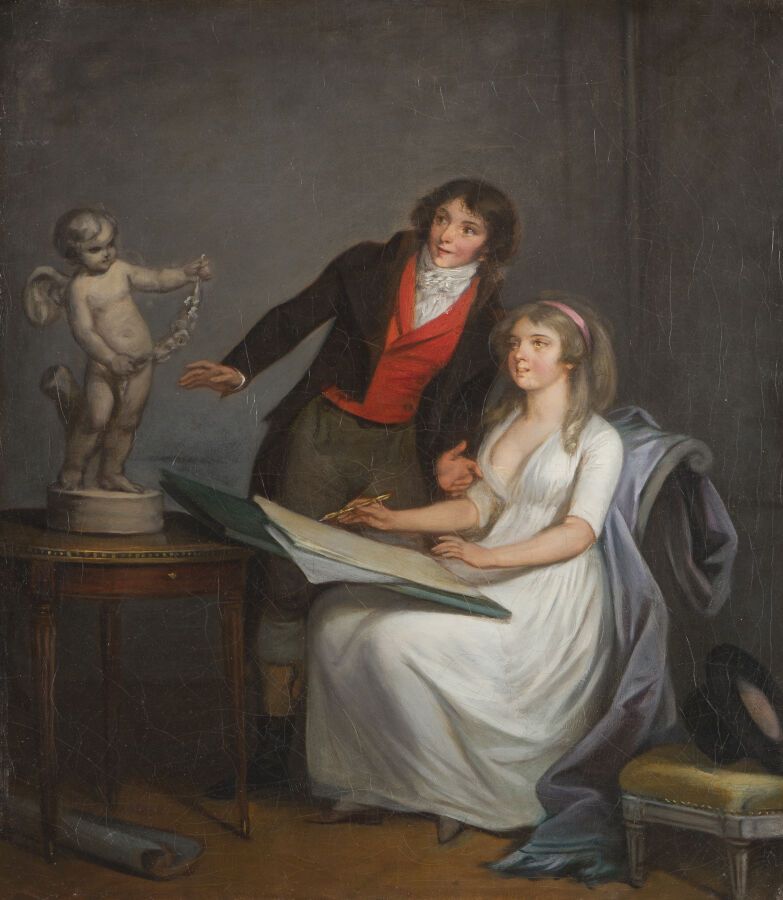Description
Attributed to Nicolas VAN GORP (Paris, 1758 - Beaumont-sur-Oise, 1820) The drawing lesson Oil on canvas. 55 x 46 cm. End of the 18th century. (Repeints). The attribution of this painting to Nicolas Van Gorp, engraved on the back of the stretcher bar, corresponds to what is known about this artist, whose works are often confused with those of Louis-Léopold Boilly (Paul Marmottan even considered him a "pasticheur de Boilly"). The doll-like face of this young draughtswoman - whose attractive teacher did not make her copy a Love by chance - corresponds to Van Gorp's female models as seen, for example, in Nina singing the romance (Toulouse, Musée des Augustins) or Ah! le Voilà! (Musée de Reims). Similarly, the sculpture is treated in the same way as Falconet's Amour in the background of the Portrait of the Countess of Vergennes and Her Daughters. A contemporary of Boilly, Nicolas Van Gorp joined the "neo-Dutch" pictorial trend that took hold in France at the end of the 18th century (and which was also exemplified by Fragonard and Marguerite Gérard): that of anecdotal, intimate and charming painting, with erotic undertones, executed with a smooth and meticulous touch reminiscent of the Dutch of the Golden Age. The making of our painting places it more towards the beginning of the artist's career, in the 1780s or early 1790s.
40
Attributed to Nicolas VAN GORP (Paris, 1758 - Beaumont-sur-Oise, 1820) The drawing lesson Oil on canvas. 55 x 46 cm. End of the 18th century. (Repeints). The attribution of this painting to Nicolas Van Gorp, engraved on the back of the stretcher bar, corresponds to what is known about this artist, whose works are often confused with those of Louis-Léopold Boilly (Paul Marmottan even considered him a "pasticheur de Boilly"). The doll-like face of this young draughtswoman - whose attractive teacher did not make her copy a Love by chance - corresponds to Van Gorp's female models as seen, for example, in Nina singing the romance (Toulouse, Musée des Augustins) or Ah! le Voilà! (Musée de Reims). Similarly, the sculpture is treated in the same way as Falconet's Amour in the background of the Portrait of the Countess of Vergennes and Her Daughters. A contemporary of Boilly, Nicolas Van Gorp joined the "neo-Dutch" pictorial trend that took hold in France at the end of the 18th century (and which was also exemplified by Fragonard and Marguerite Gérard): that of anecdotal, intimate and charming painting, with erotic undertones, executed with a smooth and meticulous touch reminiscent of the Dutch of the Golden Age. The making of our painting places it more towards the beginning of the artist's career, in the 1780s or early 1790s.
